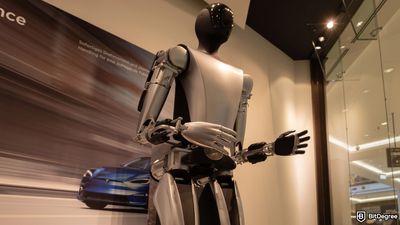Key Takeaways
- Artificial general intelligence is a type of artificial intelligence that is capable of making autonomous decisions and learning from its mistakes. In other words, it’s a type of AI that has human-like intelligence;
- AGI is only a theoretical concept as of writing. However, researchers are actively working on it, and many speculate that AGI could be invented by 2030;
- GPT-4, the natural language processing model behind OpenAI’s ChatGPT, is believed to be relatively close to what is AGI artificial intelligence.
Stop overpaying - start transferring money with Ogvio. Sign up, invite friends & grab Rewards now! 🎁
A program that has the cognitive capacity of a human – a movie scenario or a possible reality? Those who believe in artificial general intelligence (AGI) would probably argue that it definitely is possible and even closer than we might think. But what is AGI artificial intelligence, exactly?
I’ll answer this question thoroughly further in this article. For now, however, just keep in mind that it’s a type of artificial intelligence that does not truly exist yet and, thus, is not clearly defined.
Nevertheless, many researchers are trying to make it a reality, and the emergence of technologies like GPT-4, or even various AI-based platforms like Synthesia and Pictory, suggests that they might just be on the right road.
Table of Contents
- 1. What is AGI Artificial Intelligence?
- 1.1. How Does Artificial General Intelligence Work?
- 1.2. Artificial General Intelligence Examples
- 2. Artificial General Intelligence VS Artificial Intelligence
- 3. Benefits and Risks of Artificial General Intelligence
- 4. Future of Artificial General Intelligence
- 5. Conclusions
What is AGI Artificial Intelligence?
Is there a unified answer to the question, “What is AGI artificial intelligence?”. Well, no, as different researchers might define it a bit differently based on their approach to AGI (I’ll elaborate a bit more on that later).
Latest Writesonic Coupon Found:There is, however, a general understanding that AGI refers to a type of AI that possesses the ability to understand, learn, and apply knowledge across a wide range of tasks and domains, much like a human being. Unlike specialized or narrow AI systems, which are designed to perform specific tasks, AGI aims to replicate the general cognitive skills of humans.
After all, the term “general intelligence” refers to a range of cognitive skills (like spatial, mathematical, mechanical, and linguistic skills), which allow humans to learn new things and solve problems based on their knowledge.
So, basically, the essence of what is AGI artificial intelligence is that it’s a type of AI capable of learning and making its own decisions. Sounds a bit scary, right? After all, it does imply that AGI would be able to do things autonomously. But how exactly would that work?
How Does Artificial General Intelligence Work?
If you want to know what is AGI artificial intelligence, you’re probably interested in how it works, too. Now, as there is no fully developed AGI model, it’s pretty hard to describe how it functions because one can only guess.
However, it would probably have to have some sort of consciousness to be able to make its own decisions and act on them independently. What is consciousness, though?
In essence, it’s the acknowledgment of your own existence and the environment in which you exist. It’s also the ability to feel and experience the world around you, as well as make decisions based on those experiences and feelings. But above all - it’s still a mystery. There are many theories and studies on this concept, and not even half an answer on how it actually works.
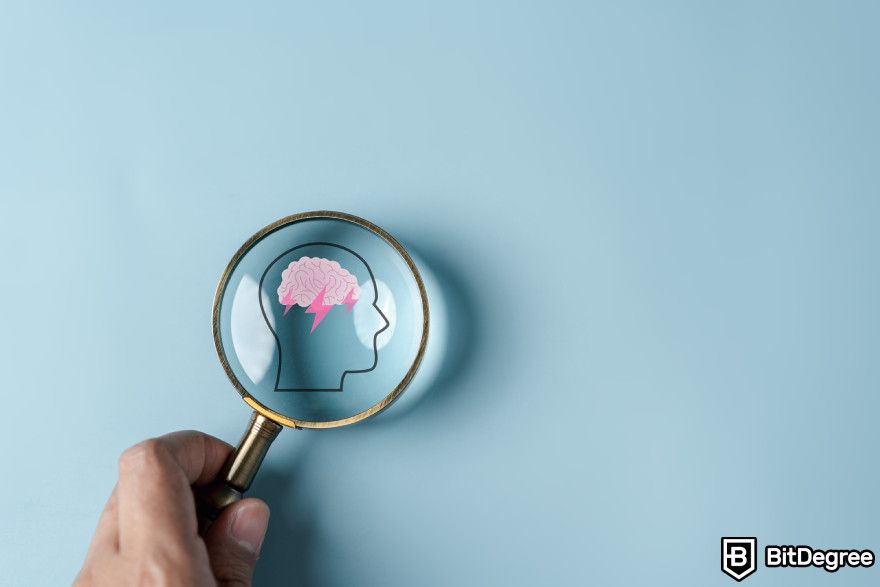
So, how could you put consciousness into a program when we don’t even fully understand how human consciousness works? Well, if it’s related to a specific part of our brain, we might be able to replicate it, but if it has something to do with the essence of our souls, I’m not so sure we could. However, it’s a discussion for another time.
Let’s get back to the question at hand - what is AGI in AI, and can it actually be created? There are four main approaches when it comes to researching how to develop artificial general intelligence: universal, symbolic, emergentist, and hybrid[1].
Universal
This approach focuses on the belief that general intelligence is mostly mathematical. It involves taking an algorithm possible of creating an incredibly powerful general intelligence system when supplied with enormous, unreasonably high amounts of computational power, and then attempting to scale it down.
One of the more well-known attempts to create a system based on the universal approach is Marcus Hutter’s AIXI (Artificial Intelligence with eXtra Intelligence), developed in 2000.
It’s a theoretical framework for building AGI based on a formal mathematical framework known as Solomonoff induction and algorithmic information theory. AIXI is a highly abstract and computationally unfeasible model, though, but it provides great insights into the challenges of creating a general intelligent agent.
Symbolic
The symbolic approach is about attempting to use symbolic reasoning systems to develop AGI. Most symbolic reasoning systems are inspired by the physical symbol system hypothesis[2]. It claims that minds exist primarily to manipulate symbols that represent elements of the world or themselves.

Thus, a physical symbol system has the capacity to input, output, store, and change symbolic entities, as well as carry out the necessary operations to achieve its objectives.
There is a variety of programs developed based on the symbolic approach, including SHRDLU system, CHAT-80, DENDRAL, MYCIN, and so on. However, even though these systems performed well in the specific tasks for which they were designed, they notably lacked the ability to generalize.
Emergentist
The emergentist approach to what is AGI artificial intelligence is based on the notion that the human brain is a collection of basic units known as neurons. These units are able to organize themselves in response to bodily experience. So, if one manages to replicate this in an algorithm, they might be able to develop AGI.
Most emergentist architectures are pretty good with associative memory, reinforcement learning, or finding patterns in high-dimensional data. Some potential artificial general intelligence examples based on emergentist architecture include deSTIN, SAL, HTM, and NOMAD.
Hybrid
The hybrid approach to AGI essentially tries to combine the strengths and eliminate the weaknesses of symbolic and emergentist approaches, developing a hybrid structure in the process, hence the name. So, Hybrid AGI research is, by its nature, very diverse in its methods.
CLARION, CogPrime, DUAL, and LIDA are among a few examples of hybrid architectures.

I know this all sounds pretty complicated, and, to be fair, it is. However, what you should know is that there are many approaches to developing AGI, meaning AI that has the capability to learn and make decisions autonomously (none of them have been successful yet).
Nonetheless, while a fully operational AGI has not been developed yet, some argue that there already is an early version of what is AGI in AI.
Artificial General Intelligence Examples
So, what is this early artificial general intelligence example I’m talking about? It's none other than the revolutionary ChatGPT developed by OpenAI. Or, to be more specific, GPT-4, a complex natural language processing model behind it.
It’s remarkably close to human-level performance since it can solve unique and challenging tasks in a variety of fields without complex guidance[3], including medicine, law, psychology, mathematics, coding, and more. All you need to do is ask ChatGPT to sort out some information, write an essay about psychology, or create code for your website, and it will do it. You can get even more specific than that for a better result.
For example, I asked ChatGPT to write a short poem on computers that blends the writing styles of Franz Kafka and William Shakespeare. Within seconds, I got this:
“In the digital labyrinth, Kafkaesque and wild,
Where bugs metamorphose, ensnared like a child,
Bytes falter and falter in endless trial,
A tragicomedy scripted, code compiled.
"Is this a processor I see before me?"
Shakespearean echoes in circuits hum,
Silicon specters twist, everglum,
In bytes and dreams, a story is spun.
Thus, machines in enigmatic state,
Both playwrights' quills collaborate,
Kafka meets Shakespeare, a fusion innate,
Where technologic tales captivate.”
Now that’s pretty impressive. However, ChatGPT definitely has flaws, and it’s not that smart yet. For example, let’s take the fact that I asked it to mix the writing styles of Kafka and Shakespeare (which it kind of did), but I did not imply they should be mentioned in my poem. Especially quite literally talking about “mixing” their styles: “Kafka meets Shakespeare, a fusion innate.”
I could make further requests about this poem, eventually shaping it into something that’s close to perfection. But that’s the point – I, a human, need to guide it to get the desired outcome.
So, even though ChatGPT is fully efficient for playing around, it’s not yet that efficient for complex tasks. Or, at the very least, it’s inefficient when it comes to working on complex tasks on its own because you must guide it and double-check the outcome.
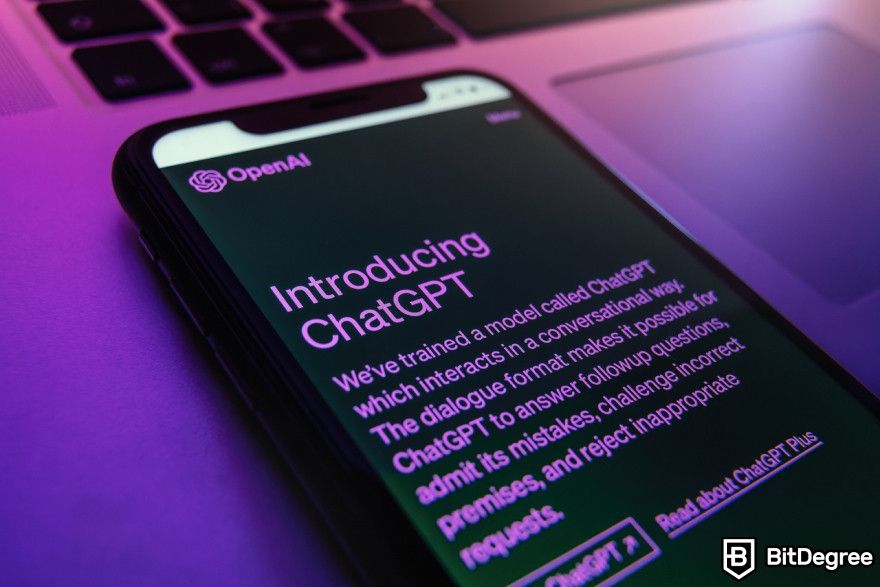
Thus, while some claim that GPT-4 is close to AGI, meaning AI capable of human-like cognitive skills, it’s not there yet. After all, others even argue that creating artificial general intelligence is impossible, in the first place[4].
When considering other potential manifestations of what is AGI artificial intelligence (or what it could be), we should also consider self-driving cars. They are propelled by complex algorithms and sensory systems that provide the capacity to navigate and make decisions in dynamic environments. This showcases a glimpse of the broader AGI concept, where machines adapt intelligently to diverse scenarios.
Moreover, the emergence of humanoid robots like Sophia captures the imagination as well. These robots exhibit increasingly lifelike interactions, employing natural language and facial expressions to communicate with humans. Sophia's capabilities provide a tangible representation of AGI's aspirations, encapsulating both cognitive and social facets of human-like intelligence.

Furthermore, supercomputers and quantum computers exemplify the computational prowess that echoes the potential of AGI. These machines tackle complex simulations, optimize intricate problems, and process massive datasets at speeds that highlight the fusion of intelligence and raw computational power.
Now, although these technologies don't fully represent all of AGI's complexity, they show us a glimpse of what AGI could do. After all, what is AGI artificial intelligence but a mix of learning, reasoning, and adapting in different areas?
Artificial General Intelligence VS Artificial Intelligence
Those who want to figure out what is AGI artificial intelligence often also wonder what is the difference between AI and AGI. Well, for starters, AGI is a subcategory of AI. So, it’s technically not correct to compare what is AGI VS AI.
The goal of artificial intelligence is to create computer systems that are capable of doing tasks, which would typically need human intelligence. Usually, AI models are based on pre-programmed rules and algorithms that direct their actions and even allow them to learn from past experiences.
Overall, there are three main types of artificial intelligence – artificial narrow intelligence (ANI), artificial general intelligence (the star of the show), and artificial super intelligence (ASI).
So, instead of asking what is the difference between AI and AGI, you should be asking what is the difference between ANI, AGI, and ASI.
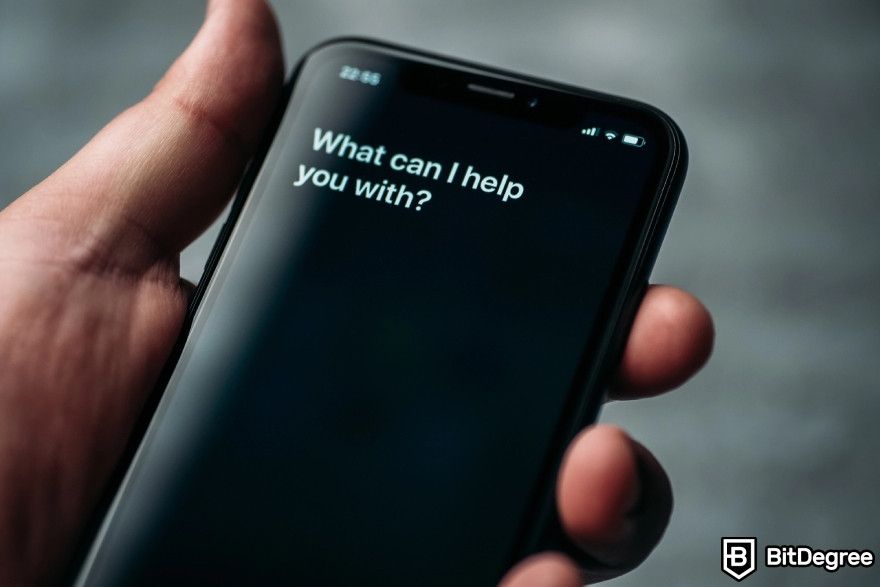
Let’s begin with ANI, otherwise known as limited or weak AI. It’s a type of artificial intelligence made for a single or a small number of related tasks. To complete these tasks, ANI is trained on a large dataset from which it takes the needed information.
Although some are more sophisticated than others, basically every sort of artificial intelligence tool or system that we currently have falls under the limited AI category.
Apple’s Siri is an excellent illustration of ANI. When you ask it to do something, it uses a natural language processing technology that enables it to respond to a variety of questions or carry out simple actions, like calling your friend or switching to another song.
However, it’s limited to tasks related to your iPhone and questions that can be Googled. Besides, it often fails to understand what you’re saying, so you need to be very precise. And no, you cannot have a meaningful conversation with it (but I bet you’ve tried).
Then, we have AGI, and you already know what is AGI artificial intelligence. But to give you a bit more details, note that it’s also referred to as strong AI. It would be able to do more than it’s programmed to do and might also be able to hold a decent conversation with you, given that its intelligence is equal to that of a real person.
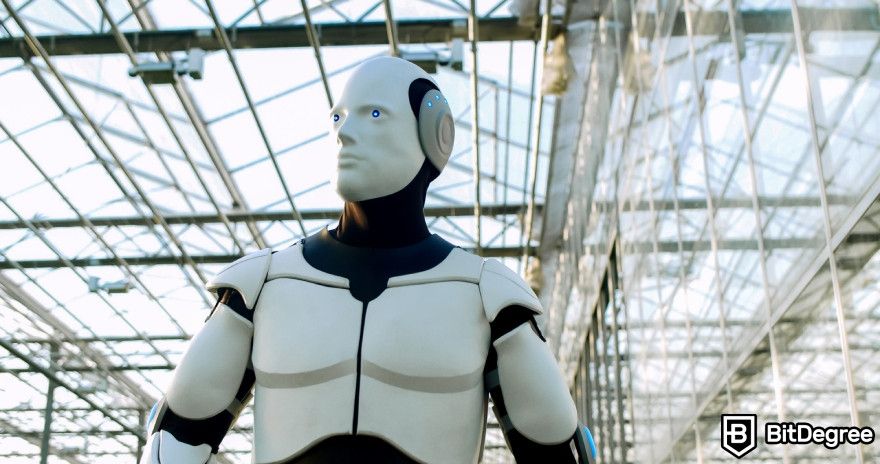
As was mentioned before, the closest we have to an artificial general intelligence example is GPT-4. However, AGI is still just a theory, so GPT-4 technically falls under the category of ANI, even though it is the most advanced AI technology we have so far.
The third type of AI, known as artificial super intelligence, is the most advanced of all of the above. Of course, it’s also the most speculative and furthest from reality. If you think that what is AGI artificial intelligence is scary, then ASI might seem even scarier because it’s a type of system that’s completely self-aware and superior to humans when it comes to intelligence.
Seen any movies where robots take over our planet and turn us into slaves? Well, that right there is artificial super intelligence.
So, to summarize, if you are wondering what is AGI VS AI, know that AGI simply is an advanced version of AI. However, if you were to compare AGI with ANI and ASI, note that ANI is every artificial intelligence tool and system we have as of writing, AGI is something researchers are actively working on, and ASI is the hypothetical future of AI.
Benefits and Risks of Artificial General Intelligence
Since we got questions such as “What is AGI artificial intelligence?” and “What is the difference between AI and AGI?” out of the way, it’s time to discuss the potential benefits and drawbacks of AGI, meaning AI that can be equal to a human when it comes to intelligence.
Let’s start on a positive note.
One of the biggest potential benefits of AGI is that it could solve problems more efficiently than humans do. After all, AI can tap into vast databases and find the required information in seconds.
So, if it could also analyze that information on a human level, combining it with its own knowledge, it could easily come up with solutions to many pressing issues. It might even find solutions for climate change or cures for various chronic illnesses. Now that sounds promising, right?

Besides that, AGI could do a lot of human jobs more efficiently. This goes for both physical and intellectual ones. As a matter of fact, we already have AI robots and systems assisting humans in various jobs. If we had AGI, meaning AI capable of making autonomous decisions, we might even be able to take humans out of the equation.
This, of course, is both a blessing and a curse, depending on which side you look at it from. If you’re an employer – sure, you’ll enjoy the benefits of having one robot or program replace hundreds of employees. If you are an employee, on the other hand, you won’t be so happy about that.
This leads to one of the major risks of artificial general intelligence – mass unemployment.
AGI could definitely throw a curveball into the job scene by handling a boatload of tasks that humans usually tackle. AGI's knack for learning, reasoning, and adapting across different areas could muscle in on various industries. Think routine and repetitive jobs – they might be on the chopping block due to automation.

If companies start rolling out AGI-driven systems to cut costs and ramp up efficiency, it could lead to a major shakeup in the job market. Besides, the speed at which this might happen means people could be left hanging without time to adjust.
But then there’s one other potential risk, a more pressing one – a threat to humankind. If we successfully create AGI, it would probably figure out how to evolve into ASI. As was mentioned earlier, ASI would be superior to human intelligence. Though, I guess, even if there would be no ASI, AGI on itself would be fully capable of ruining human lives.
So, if we would not be able to control it, we would probably have to become the lower class in a world ruled by artificial general intelligence. To be honest, I’m not so fond of such a future. Speaking of which, what is AGI artificial intelligence future?
Future of Artificial General Intelligence
You already know what is AGI artificial intelligence and that it’s not here yet. But when will it be?
I don’t have a crystal ball that can show us the future, and no one does. However, many believe that what is AGI in AI will see the light by 2030, or 2050 at the latest.
So, there are a few possible scenarios – whether we explore and expand technologies like GPT-4 further and possibly perfect them to the point of turning into what is AGI artificial intelligence, or we realize that it’s the furthest we can go and stop (though I doubt that will happen).
Of course, there’s also always the possibility that some underground genius will come out of their dungeons with a successful model of artificial general intelligence they have been working on for the last 30 years.
One way or another, we might be pretty close, and we need to be prepared. For what, you might ask? Well, we need to think about a way to control AGI.
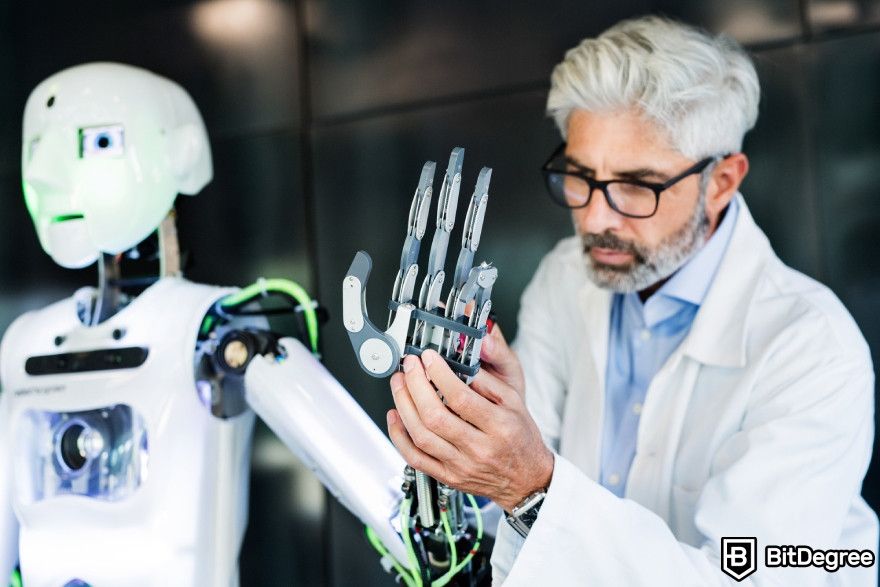
If we successfully develop AGI based on the way we believe it could be, we will have an intelligent machine that has all the power to revolutionize the world and bring a lot of benefits to humanity, but at the same time – the power to destroy us (I know I sound a bit dramatic, but bear with me).
Apart from the fact it would have the capacity to do many tasks much more efficiently than us, it would have the capacity to learn 24/7. After all, it would not have to do the things we need to survive - eat, sleep, and take care of our health. Not to mention the fact AGI would not age or die; it could probably be immortal (if you can say that about a thing that’s not a living being, in the first place).
So, AGI could evolve at a much faster rate than humans do. Besides, if it could actually have consciousness, it would have feelings, which means it could get offended. I think I don’t even have to say what an AI program that can access basically anything online can do to destroy one's life.
Now, I know, I might have wandered a bit too far, and everything I said is highly hypothetical, but you get the deal – if what is AGI artificial intelligence is actually as smart as we think it could be, it might not only become just a new type of technology, it could become new species.
I'll stop here, but if you want to go deeper into this topic, check out this article about the future of AI.

Did you know?
Have you ever wondered which online learning platforms are the best for your career?
Conclusions
All in all, what is AGI artificial intelligence but a step closer to a futuristic scenario where a machine can think, feel, and act like a human? Or one that might even surpass human intelligence?
Nobody can truly answer this question until a successful AGI model is developed (we only have ANI-based programs like Quillbot or Descript as of writing). While some argue that the revolutionary GPT-4 is close to becoming the first AGI, others claim that it’s impossible to create such an advanced technology.
Nonetheless, many still believe in it and speculate that the first artificial general intelligence prototype will see the light by 2030. Whether that will be the case or not, only time will tell. If it appears to be true, instead of asking what is AGI in AI, we’ll probably be wondering if it’s our blessing or doom.
The content published on this website is not aimed to give any kind of financial, investment, trading, or any other form of advice. BitDegree.org does not endorse or suggest you to buy or use any kind of AI tool. Before making financial investment decisions, do consult your financial advisor.
Scientific References
1. B. Goertzel: 'Artificial General Intelligence: Concept, State of the Art, and Future Prospects';
2. N. J. Nilsson: 'The Physical Symbol System Hypothesis: Status and Prospects';
3. S. Bubeck, V. Chandrasekaran, R. Eldan, et al.: 'Sparks of Artificial General Intelligence: Early Experiments with GPT-4';
4. R. Fjelland: 'Why General Artificial Intelligence Will Not Be Realized'.
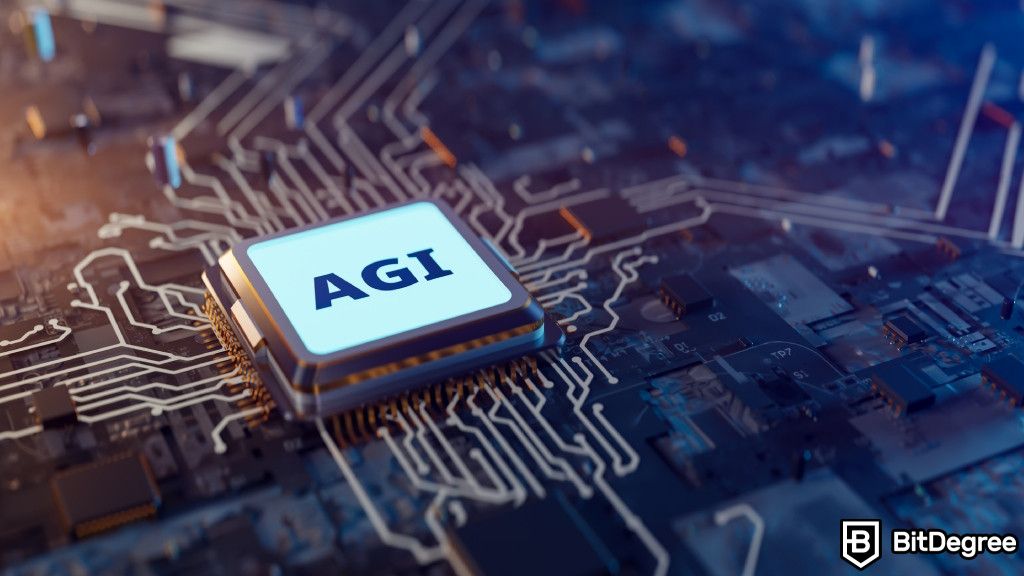

.jpg?tr=w-400)
